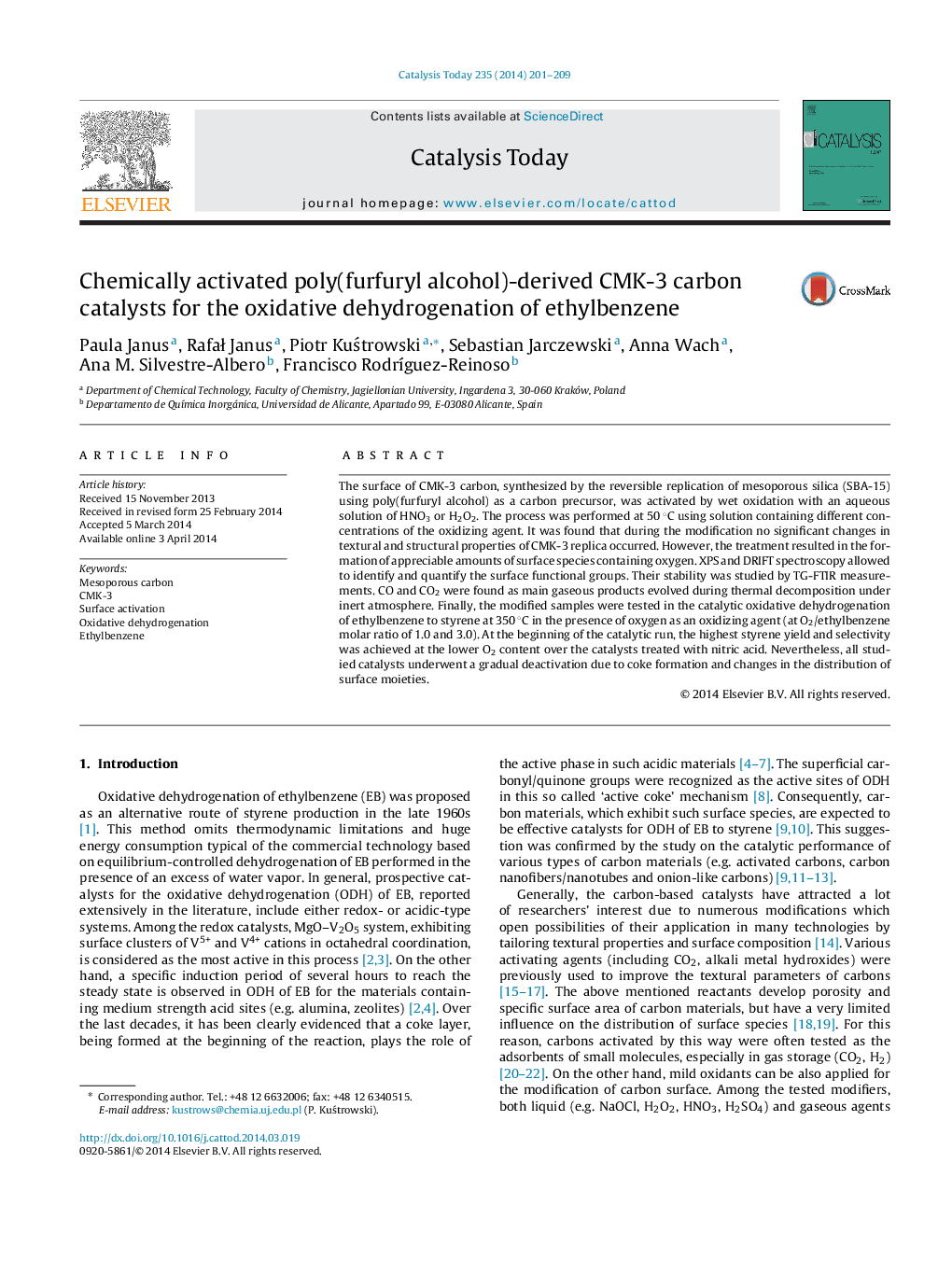| کد مقاله | کد نشریه | سال انتشار | مقاله انگلیسی | نسخه تمام متن |
|---|---|---|---|---|
| 54693 | 47020 | 2014 | 9 صفحه PDF | دانلود رایگان |

• H2O2 and HNO3 effectively oxidize the surface of CMK-3 carbon replica.
• Activation at 50 °C does not destroy the porous structure of CMK-3.
• The oxidant used influences the kind and content of formed surface species.
• The modified CMK-3 catalysts are active in oxidative dehydrogenation of ethylbenzene.
• The highest styrene yield and selectivity is achieved for the samples treated with HNO3.
The surface of CMK-3 carbon, synthesized by the reversible replication of mesoporous silica (SBA-15) using poly(furfuryl alcohol) as a carbon precursor, was activated by wet oxidation with an aqueous solution of HNO3 or H2O2. The process was performed at 50 °C using solution containing different concentrations of the oxidizing agent. It was found that during the modification no significant changes in textural and structural properties of CMK-3 replica occurred. However, the treatment resulted in the formation of appreciable amounts of surface species containing oxygen. XPS and DRIFT spectroscopy allowed to identify and quantify the surface functional groups. Their stability was studied by TG-FTIR measurements. CO and CO2 were found as main gaseous products evolved during thermal decomposition under inert atmosphere. Finally, the modified samples were tested in the catalytic oxidative dehydrogenation of ethylbenzene to styrene at 350 °C in the presence of oxygen as an oxidizing agent (at O2/ethylbenzene molar ratio of 1.0 and 3.0). At the beginning of the catalytic run, the highest styrene yield and selectivity was achieved at the lower O2 content over the catalysts treated with nitric acid. Nevertheless, all studied catalysts underwent a gradual deactivation due to coke formation and changes in the distribution of surface moieties.
Figure optionsDownload high-quality image (132 K)Download as PowerPoint slide
Journal: Catalysis Today - Volume 235, 15 October 2014, Pages 201–209